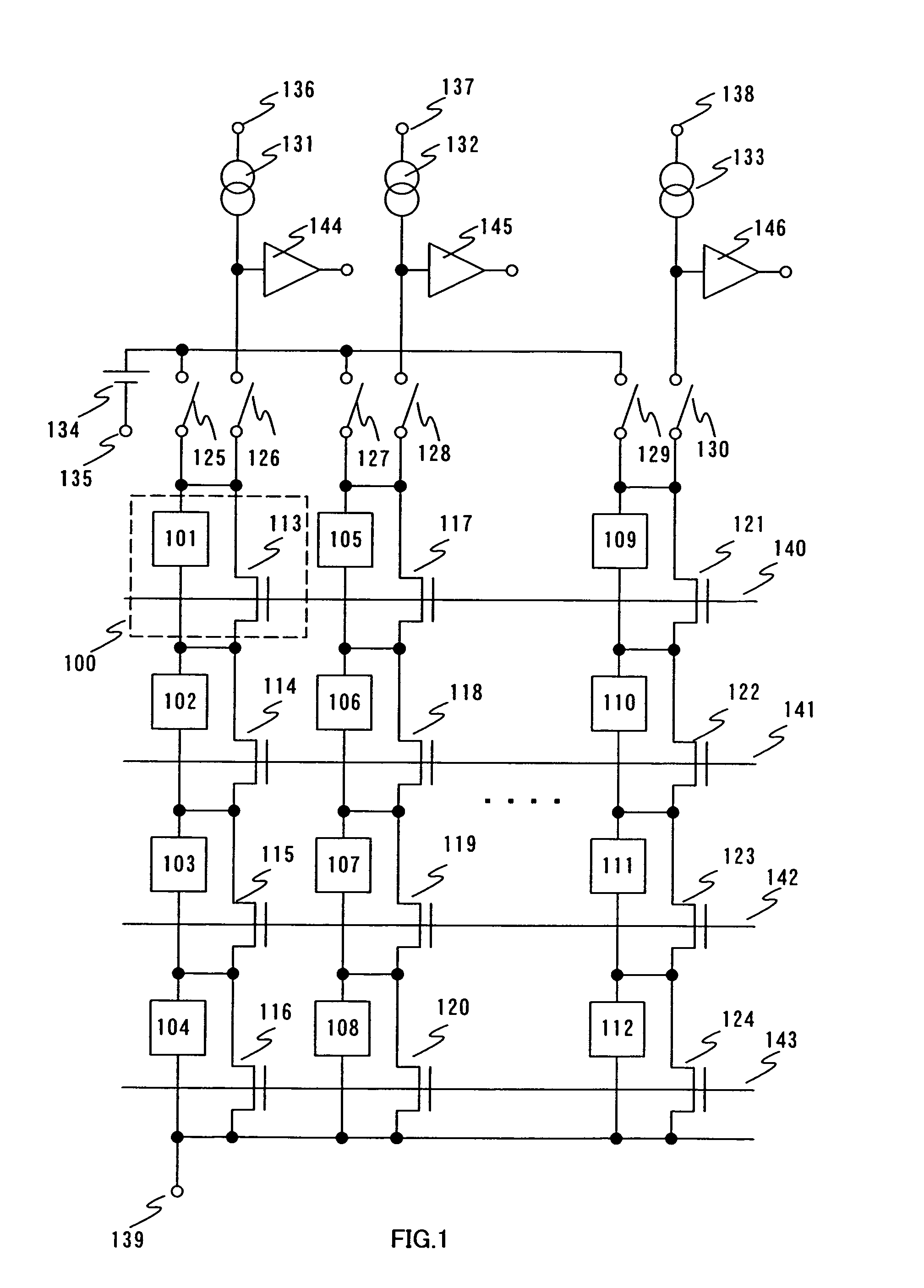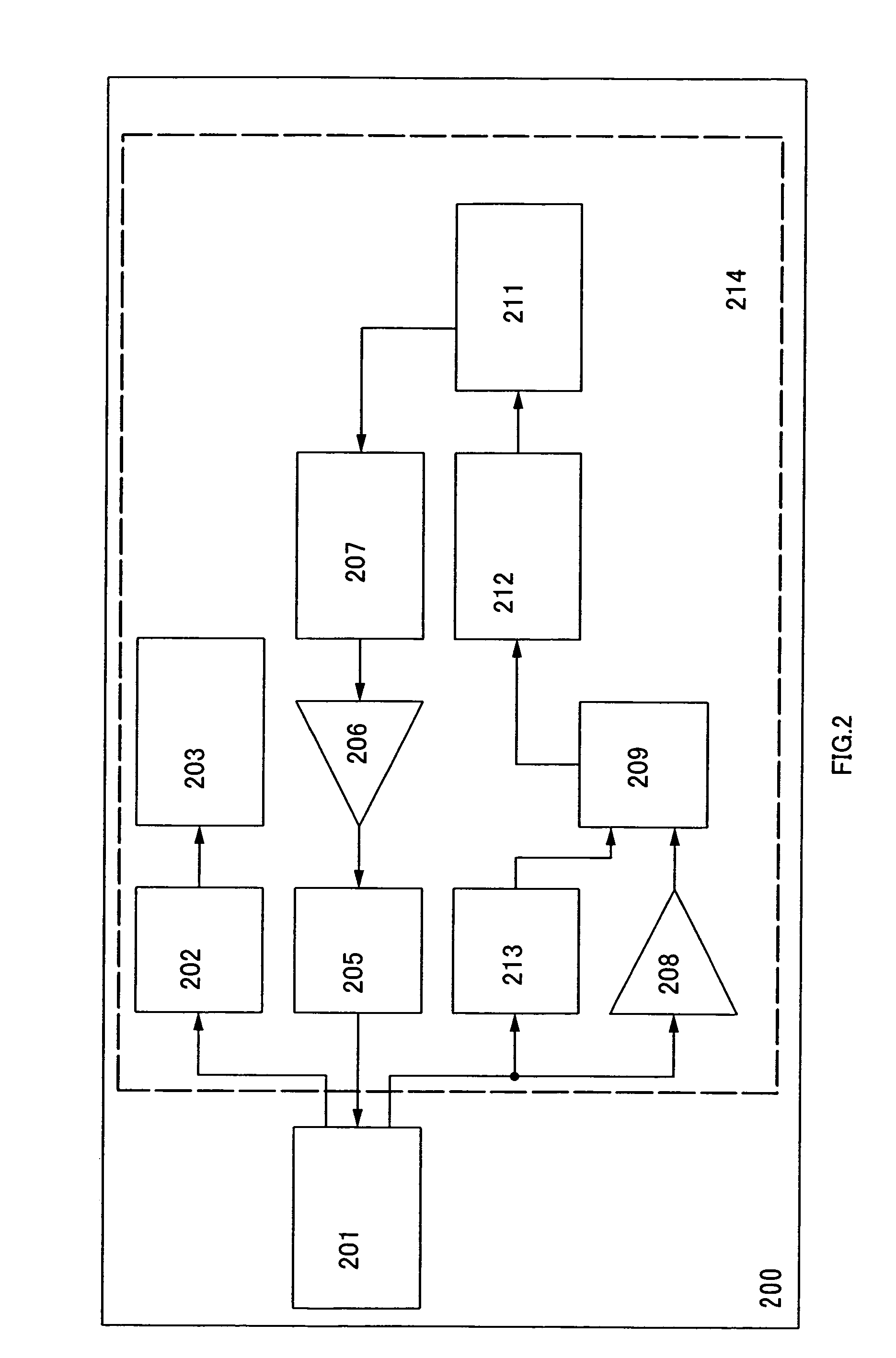Semiconductor device, IC card, IC tag, RFID, transponder, paper money, valuable securities, passport, electronic device, bag, and clothes
a technology of semiconductor devices and organic elements, applied in static indicating devices, instruments, nanoinformatics, etc., can solve the problems of difficult to achieve good nonvolatile memory, inability to perform high-temperature treatment over 600° c., and small amount of data stored in a barcod
- Summary
- Abstract
- Description
- Claims
- Application Information
AI Technical Summary
Benefits of technology
Problems solved by technology
Method used
Image
Examples
embodiment 1
[0085]A cross-sectional structure of a semiconductor device of the invention is described (see FIG. 22). Shown herein is a cross-sectional structure of a transistor 240 and an organic element 241 included in a memory array 222, and a CMOS circuit 248 included in a switch, a sense amplifier, or the like (denoted by 225 in FIG. 22). As for a substrate 230 of the invention, a quartz substrate, a silicon substrate, a metal substrate, a stainless substrate, or the like is used as well as a glass substrate or a flexible substrate. A flexible substrate means a substrate capable of being flexibly bent, such as a plastic substrate formed using polycarbonate, polyarilate, polyether sulfone, or the like.
[0086]The organic element 241 corresponds to a stack of a first conductive layer 243, an organic compound layer 244, and a second conductive layer 245, and an insulating layer 249 is provided between the adjacent organic elements 241. FIG. 22 shows an example of a NOR memory circuit, and the se...
embodiment 2
[0093]When data writing is performed by means of light, one or both of the first conductive layer 243 and the second conductive layer 245 transmit light. The conductive layer which transmits light is formed using a light-transmissive conductive material such as indium tin oxide (ITO) or formed with a thickness to transmit light even if the material is not a light-transmissive conductive material.
[0094]For the organic compound layer 244, an organic compound material having conductivity can be used, and for example, substances which have high hole-transporting property can be used; namely, an aromatic amine compound (that is, a compound containing a bond of benzene ring—nitrogen) such as 4,4′-bis[N-(1-naphthyl)-N-phenyl-amino]-biphenyl (abbreviated to α-NPD), 4,4′-bis[N-(3-methylphenyl)-N-phenyl-amino]-biphenyl (abbreviated to TPD), 4,4′,4″-tris(N,N-diphenyl-amino)-triphenylamine (abbreviated to TDATA), 4,4′,4″-tris[N-(3-methylphenyl)-N-phenyl-amino]-triphenylamine (abbreviated to MTD...
embodiment 3
[0099]Next, data writing by means of an optical function is described. In this case, the organic compound layer 244 is irradiated with laser light from a light-transmissive conductive layer side (the second conductive layer 245 herein). Here, the organic compound layer 244 at a desired portion is selectively irradiated with the laser light to destroy the organic compound layer 244. The destroyed organic compound layer 244 is insulated, and thus the electric resistance thereof becomes considerably large compared to that of the other portion. Data writing is performed by utilizing the phenomenon that the electric resistance between two conductive films provided with the organic compound layer 244 interposed therebetween varies by the laser irradiation in this manner. For example, provided that a non-laser-irradiated organic compound layer has data of ‘0’, in order to write data of ‘1’, the electric resistance is increased by selectively irradiating the organic compound layer at a desi...
PUM
 Login to View More
Login to View More Abstract
Description
Claims
Application Information
 Login to View More
Login to View More - R&D
- Intellectual Property
- Life Sciences
- Materials
- Tech Scout
- Unparalleled Data Quality
- Higher Quality Content
- 60% Fewer Hallucinations
Browse by: Latest US Patents, China's latest patents, Technical Efficacy Thesaurus, Application Domain, Technology Topic, Popular Technical Reports.
© 2025 PatSnap. All rights reserved.Legal|Privacy policy|Modern Slavery Act Transparency Statement|Sitemap|About US| Contact US: help@patsnap.com



